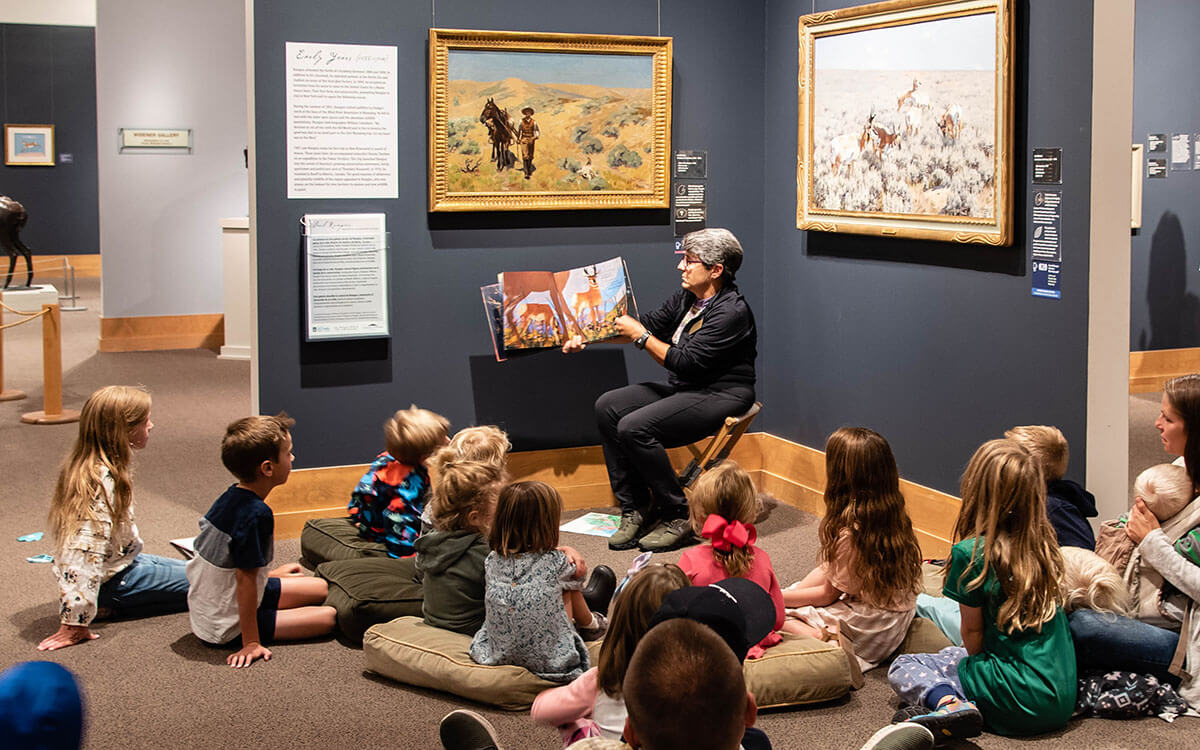Make us a beneficiary of your IRA or other “non-probate” assets
Why beneficiary designations are so powerful
Assets not included in your will are called non-probate assets. Examples are 401(k)s, IRAs, life insurance policies, and other accounts. Designating the National Museum of Wildlife Art as a beneficiary can have a big impact and may avoid unwanted taxes for your heirs.

Charitable benefits

Commonly gifted assets for beneficiaries
- IRA
- 401(k)
- Life insurance
- Joint real estate
- Joint bank accounts
- Joint property ownership
Many people choose to designate the National Museum of Wildlife Art to one or more of their accounts.
Use this tool to easily make designations. These gifts have a big impact and can often prevent unwanted taxation.
Did you know there are creative ways to support the National Museum of Wildlife Art? Ways in which the Museum, you and your loved ones all benefit at the same time?
Such giving techniques are called “planned gifts,” because with thoughtful planning, you create win-win solutions for you and the Museum.
Planning your estate and legacy for future generations, including your charitable interests, takes careful evaluation. Consulting with the appropriate professionals can assist you. Discussing your charitable intentions with us can lead to a much better result than going it alone — and will ensure that your gift is used just as you wish. We can provide valuable information about any of the creative giving techniques mentioned in these planned giving pages.

Frequently Asked Questions
A non-probate asset is an account or other asset that won’t be governed by the decisions you make in a will. Instead, these accounts commonly have an assigned beneficiary that you choose. Types of non-probate assets include many retirement accounts, life insurance, some bank accounts, and some assets (like a house or vehicle) that you jointly own with another person.
The most commonly gifted non-probate asset is an IRA or 401(k). This is because these accounts are always taxed (even for people below the estate tax threshold). Giving these accounts to charity keeps your heirs from having to pay unexpected taxes.
Yes! Even if you have a will in place you still need to designate beneficiaries for your non-probate assets.
Yes! Gifts of any size are deeply appreciated. Many people choose to leave a percentage of their estate, which scales up or down with your estate size.
No. You can usually make these easily and at no cost to you.
Yes. You are always free to revise or update your estate plans.
We’re here to help you meet your goals!
Our team would be happy to speak with you in confidence about your giving goals, with no obligation.
Name: Ponteir Sackrey
Title :Chief Advancement Officer
Phone: 307-732-5444
Email: psackrey@wildlifeart.org
Already included us in your estate plan? Let us know
More ways to make an impact
Gifts in a will or trust
Donations in your will or trust are (by far) the most popular type of planned gift. Learn more, or get help starting your will (for free!).
Popular tax-smart gifts
Many people are increasingly choosing to give non-cash assets, so they can have a bigger impact at less cost to them.
Gifts that pay you back
Give assets while providing yourself or others with income for a period of time or distributions at a later date.
